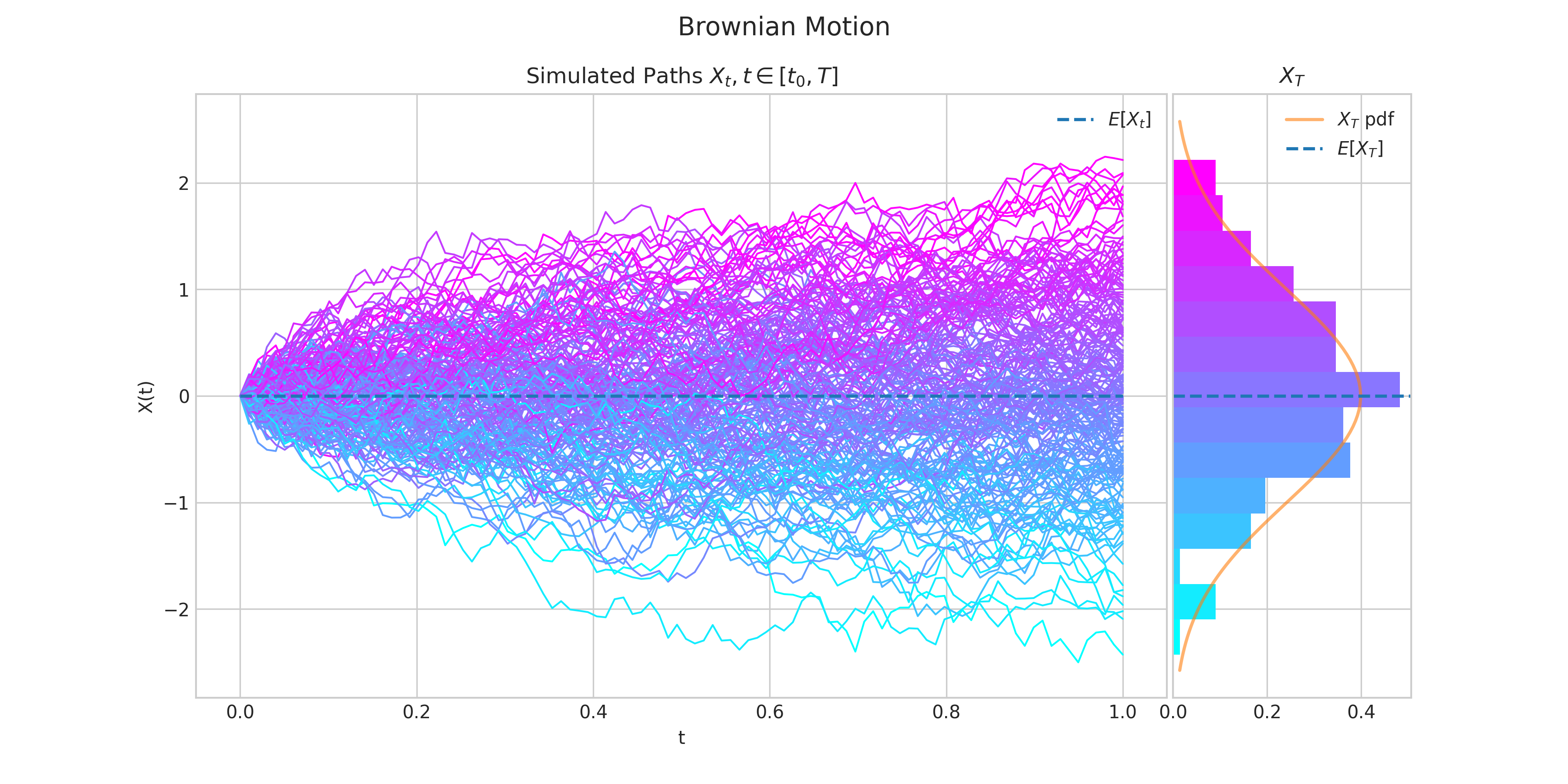Quick-Start Guide#
To start using aleatory, import the stochastic processes you want and create an
instance with the required parameters. For example, we create an instance of a standard
Brownian motion as follows.
from aleatory.processes import BrownianMotion
brownian = BrownianMotion()
Note
All processes instances will be defined on a finite interval \([0,T]\). Hence, the end point \(T\) is a required argument to create an instance of a process. In all cases \(T=1,\) by default.
The simulate() method#
Every process class has a simulate method to generate a number of trajectories/paths.
The simulate methods require two parameters:
nfor the number of steps in each pathNfor the number of paths
and will return a list with N paths generated from the specified process.
For example, we can simulate 10 paths, each one with 100 steps, from a standard Brownian motion as follows.
from aleatory.processes import BrownianMotion
brownian = BrownianMotion()
paths = brownian.simulate(n=100, N=10)
Note
Each path is a numpy array which contains
n points/steps corresponding to the values of the process at evenly spaced times over the
interval \([0,T],\) i.e.,
The plot() method#
Every process class has a plot method for generating a simple chart
with showing the required simulated trajectories/paths.
Similarly to the simulate methods, the plot methods require two parameters:
nfor the number of steps in each pathNfor the number of paths
from aleatory.processes import BrownianMotion
brownian = BrownianMotion()
brownian.plot(n=100, N=10)
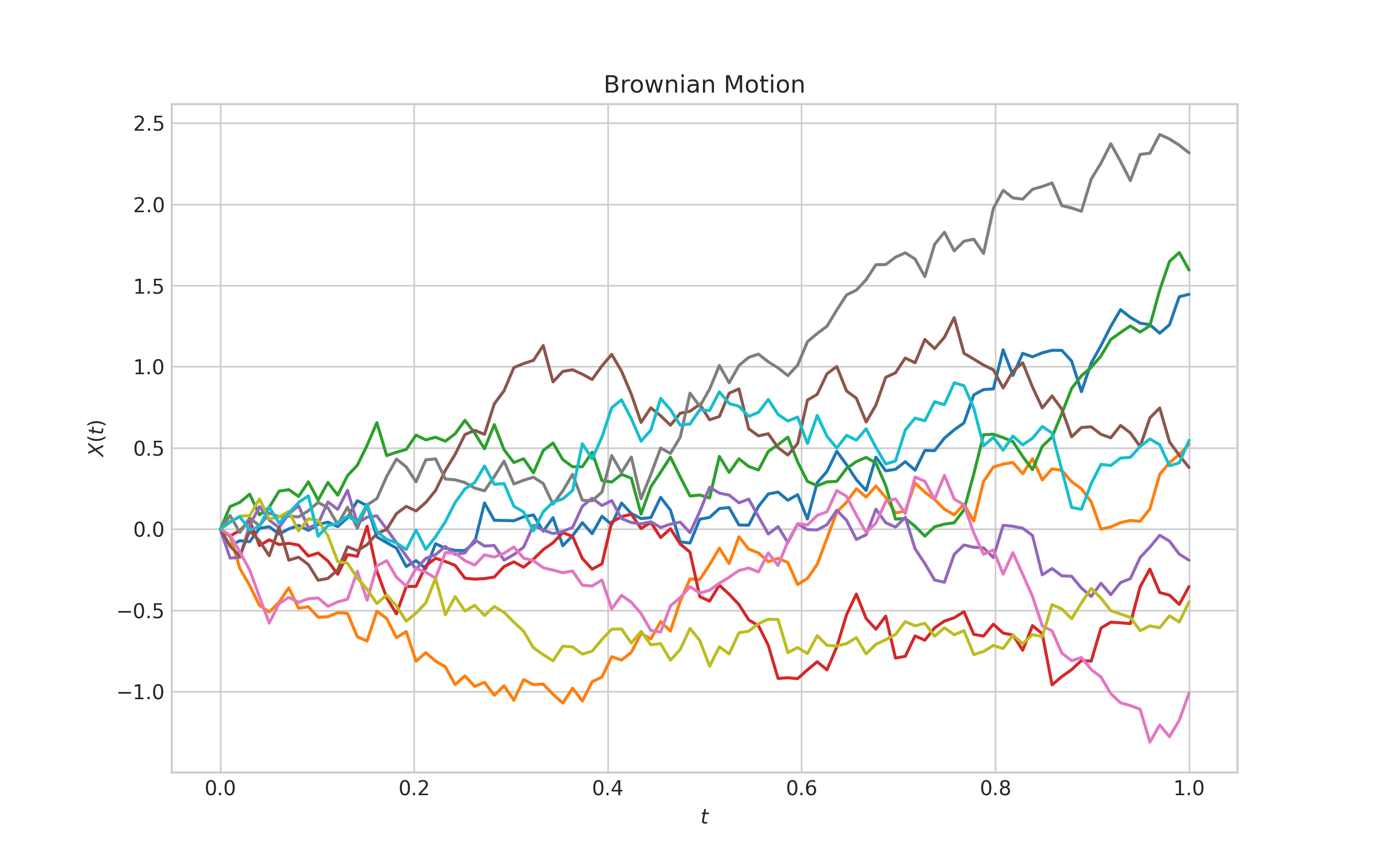
The draw() method#
Every process class has a draw method which generates a more interesting
visualisation of the simulated trajectories/paths.
The draw method also require two parameters:
nfor the number of steps in each pathNfor the number of paths
In addition, there are two optional boolean parameters
marginalwhich enables/disables a subplot showing the marginal distribution of \(X_T\). This parameters is defaulted toTrue.envelopewhich enables/disables a the ability to show envelopes made of confidence intervals. This is defaulted to False`.
This allows us to produce four different charts.
from aleatory.processes import BrownianMotion
brownian = BrownianMotion()
brownian.draw(n=100, N=200)
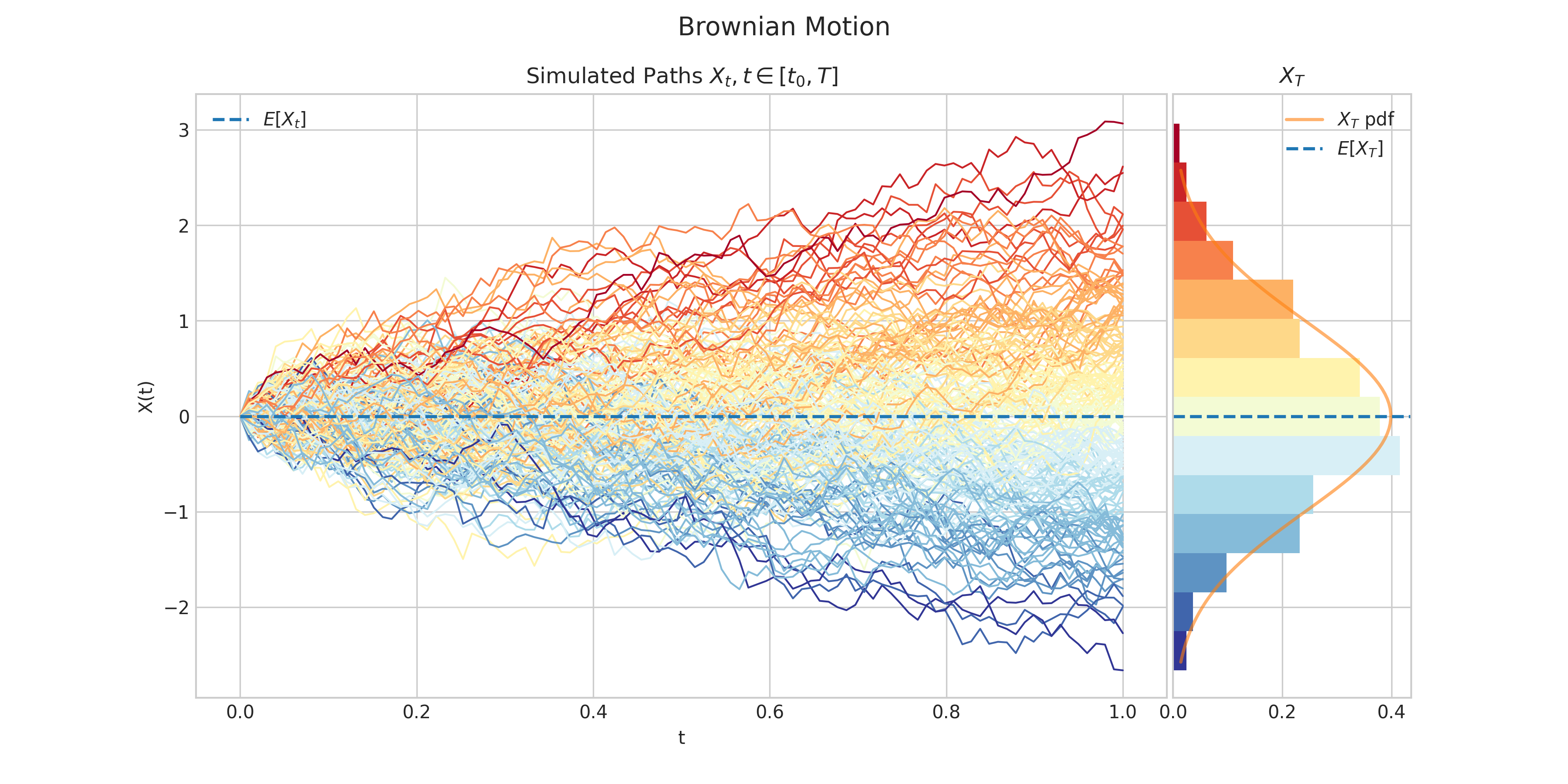
from aleatory.processes import BrownianMotion
brownian = BrownianMotion()
brownian.draw(n=100, N=200, envelope=True)

from aleatory.processes import BrownianMotion
brownian = BrownianMotion()
brownian.draw(n=100, N=200, marginal=False)

from aleatory.processes import BrownianMotion
brownian = BrownianMotion()
brownian.draw(n=100, N=200, marginal=False, envelope=True)
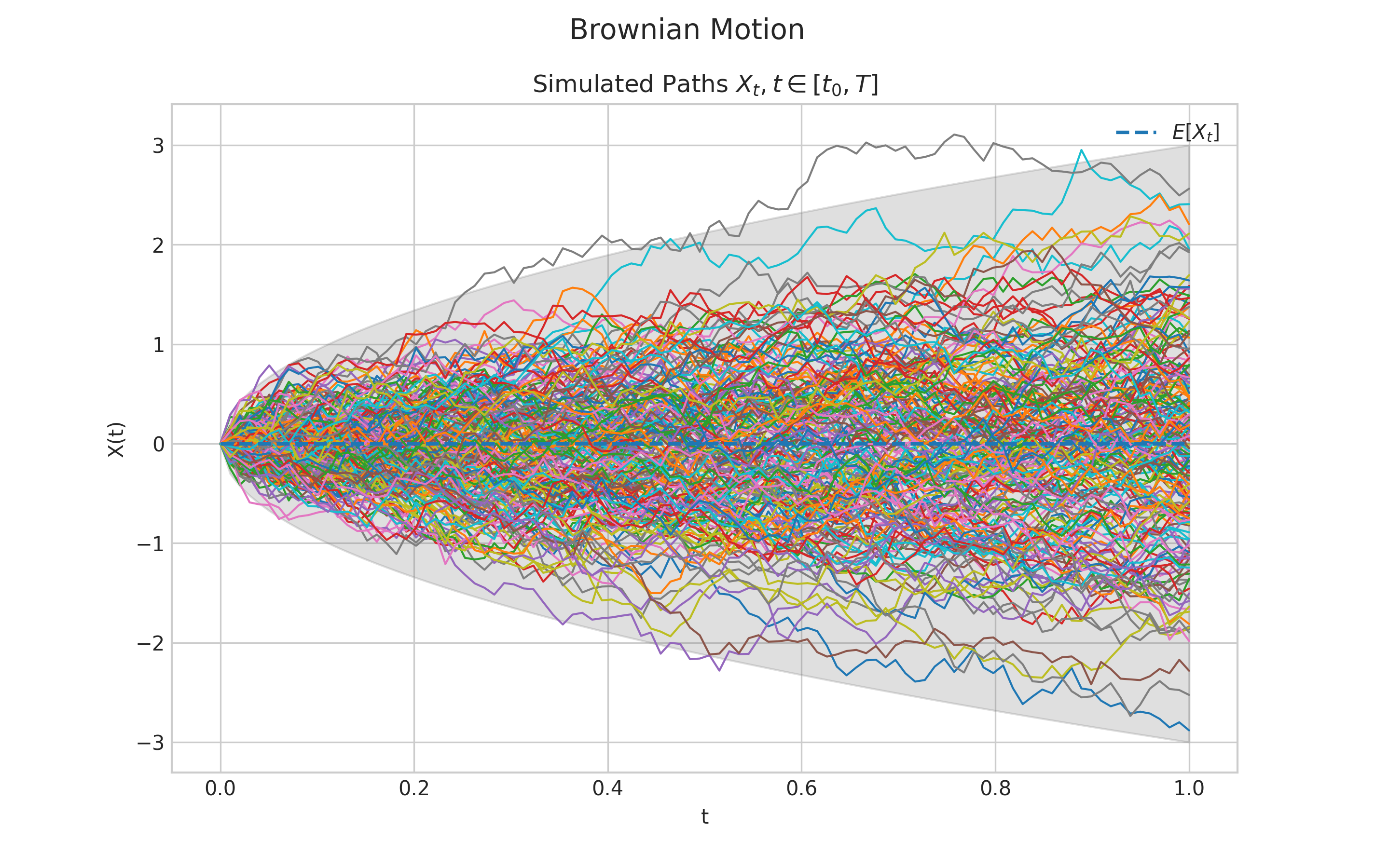
Charts Customisation#
Both plot and draw methods allow chart customisation via a style
parameter which leverages the style sheet feature.
The default style for all charts is "seaborn-v0_8-whitegrid". Visit the matplotlib Style
sheet reference
for more details and examples of the different styles.
from aleatory.processes import BrownianMotion
brownian = BrownianMotion()
brownian.plot(n=100, N=200, style='ggplot')
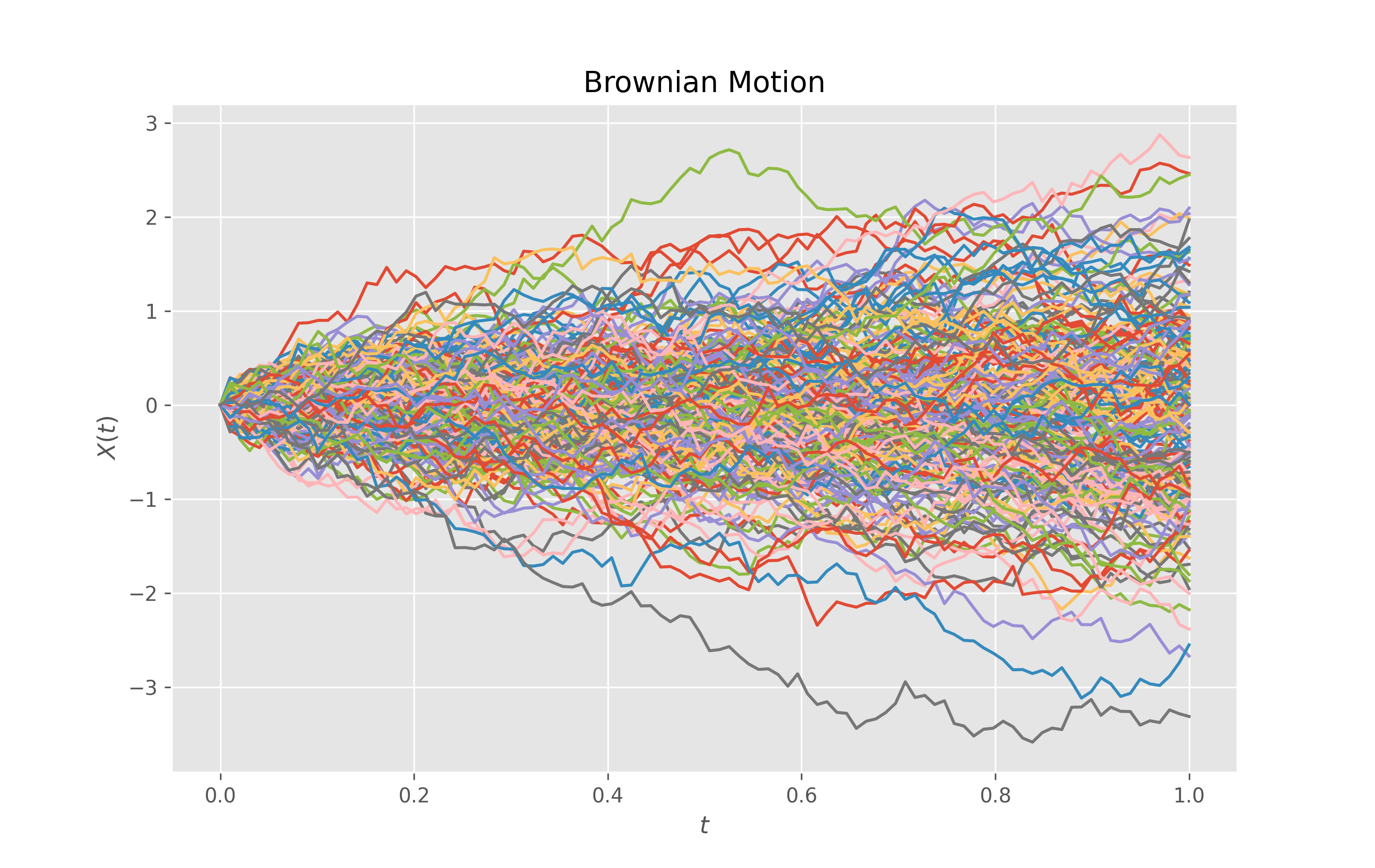
from aleatory.processes import BrownianMotion
brownian = BrownianMotion()
brownian.draw(n=100, N=100, style='Solarize_Light2')
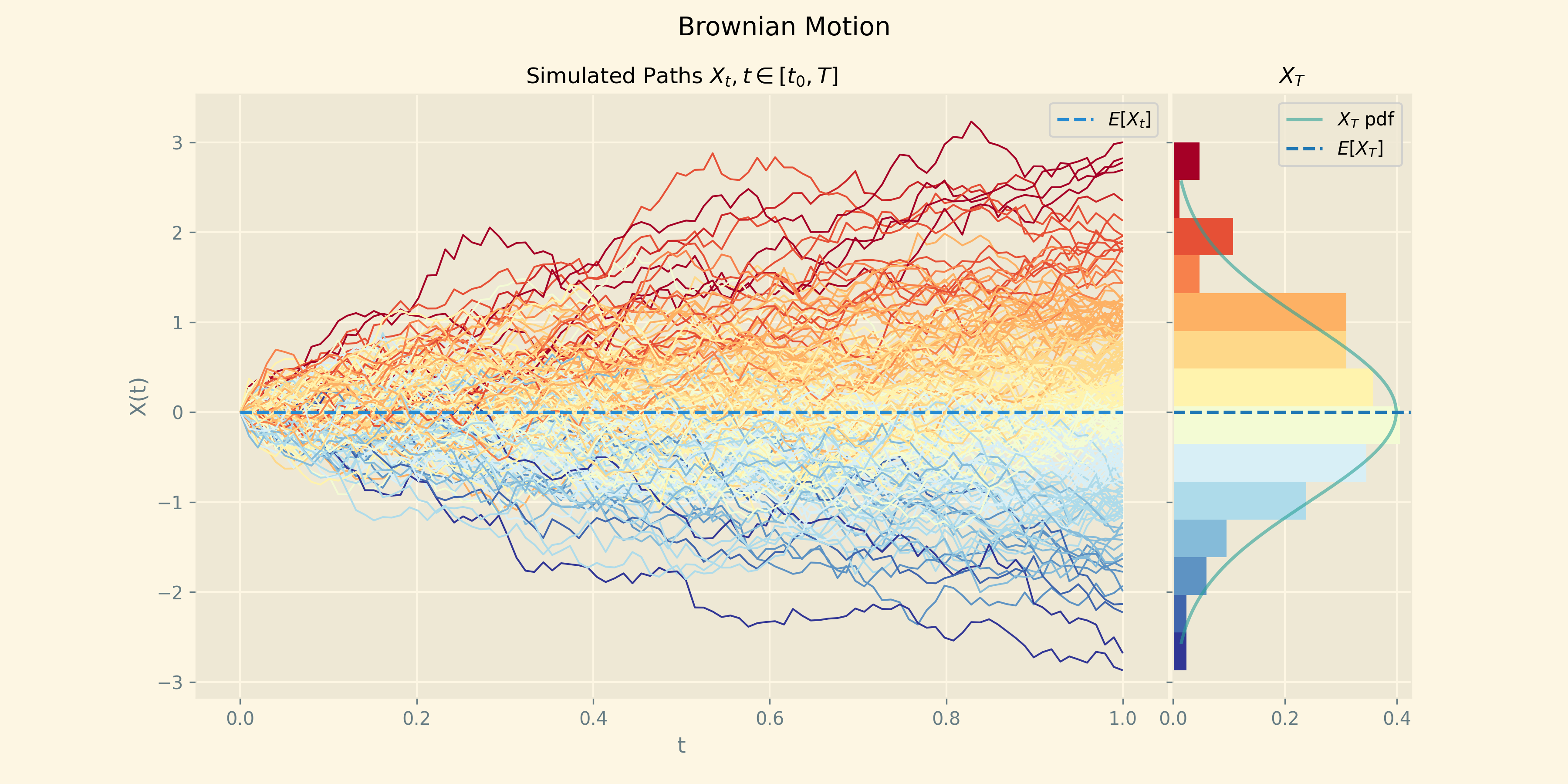
Finally, the method draw also offers the ability to customise the color map
which is used. This is done via the parameter colormap
The default color map is "RdYlBu_r". Visit the matplotlib tutorial Choosing Colormaps in Matplotlib
for more details and examples of the different color maps that you can use.
from aleatory.processes import BrownianMotion
brownian = BrownianMotion()
brownian.draw(n=100, N=100, colormap="cool")
